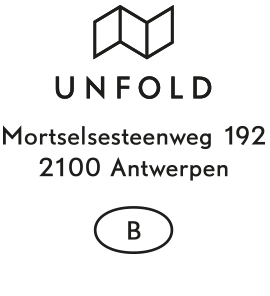Review
for
Disegno of the
exhibition
Design
Beyond Production at
Z33, House for Contemporary Art.
Read the
article at
Disegno or click
more for the full text.
Design Beyond Production
With the exhibition Design beyond Production curated by Karen
Verschooren, Z33 aims to add critical reflection to the production
of objects, services and information in a networked society.
It does so not so much by focusing on the end result of the
production system, but rather on the position of the maker or
worker, a figure who is often neglected in the recent discourse on
new production methods and systems like at-home 3D printing or
crowdsourcing.
“Design is politics. The products and systems we design have
an influence on how we live, how we organize our society, even on
how we think. In the design of our production systems, the values
and norms of our society become visible,” argues Jan Boelen,
the artistic director of Z33, writing in the exhibition's
catalogue. “The design world cannot ignore this and carries a
tremendous responsibility.”
Upon entering the former béguinage houses in which Design
beyond Production takes place, one is immediately greeted with the
grim, dehumanizing future scenario of Mercenary Cubiclists by
Tobias Revell. In a set of manipulated photographs, flanked by a
video installation and a 3D printed model, Revell depicts the
fictional British town of Galtham, an old miners city where digital
data is harvest by "taskumers". In exchange for these digital
goods, the exploited taskumers receive points with which they can
buy resources in their city.
In a twist on reality - but contemporary with current shifting
geopolitical realities - the consumers of the harvested data are
the inhabitants of the Chinese eco-city of Desert Heaven, the
western knowledge-based economy turned into a crowdsourced
intellectual sweatshop.
Bande à part by Israeli designer Tal Erez similarly
investigates (albeit in a more subtle fashion) a near-future
scenario in which every home has a 3D printer linked together to
form a distributed factory. As traditional roles, such as
"consumer", "worker", "producer" or "designer" are changing and
becoming more obscure, the project questions what this will mean on
ethical, social and political levels for both consumers and
designers.
Both projects implicitly criticise and question existing production
and trade platforms like Amazon’s Mechanical Turk, at-home 3D
printing or carbon emission trading. With three of the four works
in Design beyond Production born out of the digitization of our
society, one can read the exhibition as a critical reflection on
works such as In the Next Industrial Revolution, Atoms Are the New
Bits, the optimistic 2010 essay by Chris Anderson, former
editor-in-chief of Wired magazine.
The documentary film from Harun Farocki, Ein Neues Produkt (a new
product), reflects on the work of the German company Quickborner
Team, a consultancy business specialised in optimising the
efficiency of work environments in the knowledge industry. The
recognisable use of flip-charts, post-its, simulations and hollow,
semi-intellectual language, leaves the visitor with a disturbed but
fascinated feeling. Labour is seen here as a good that can be
produced more efficiently; something that can be optimised to
maximise profit.
Farocki has a recognisably neutral style. He only documents, he
doesn’t interfere; there is no commentary voiceover, no
information beyond that which is said in the meetings of
Quickborner Team. As a result, the documentary is far more
disturbing than the extreme fiction of Mercenary Cubiclists.
For his ERRATUM® project, Jeremy Hutchison invited workers to
insert an error into the products they typically produce, with the
resulting objects presented as a dysfunctional luxury brand. The
results are trumpets with missing tubing, misshapen footballs,
collapsing walking sticks and cheese graters with no serrating
edge.
Yet the useless products aren’t the most interesting part of
the installation. The real gem is in the long conversations
Hutchison had over e-mail with factories and their workers.
Hutchison used the trade platform Alibaba to get in contact with
several producers in China. Initial reactions to his request to
produce a product with an error are disbelieving, the factories not
understanding what Hutchinson wants.
But the message chains grow into very personal conversations,
peeling away the corporate facade and showing the insides of far
away production facilities, something that has not been possible
with such ease before. The project tells a story about
communication, and about making an anonymous factory worker into an
artist and a human being by giving them the freedom to produce
something unique in their own way.
Design beyond Production clearly opens the debate on the place of
the maker within existing and new production systems. For people
who are not well trained in the design discourse, Farocki and
Hutchison's projects are more open, yet all projects create an
unease about the way in which production may develop.
This exhibition particularly addresses designers, telling them to
be aware of being too optimistic, without being critical. Designers
often try to predict the future, but we rarely succeed.
 contact
contact